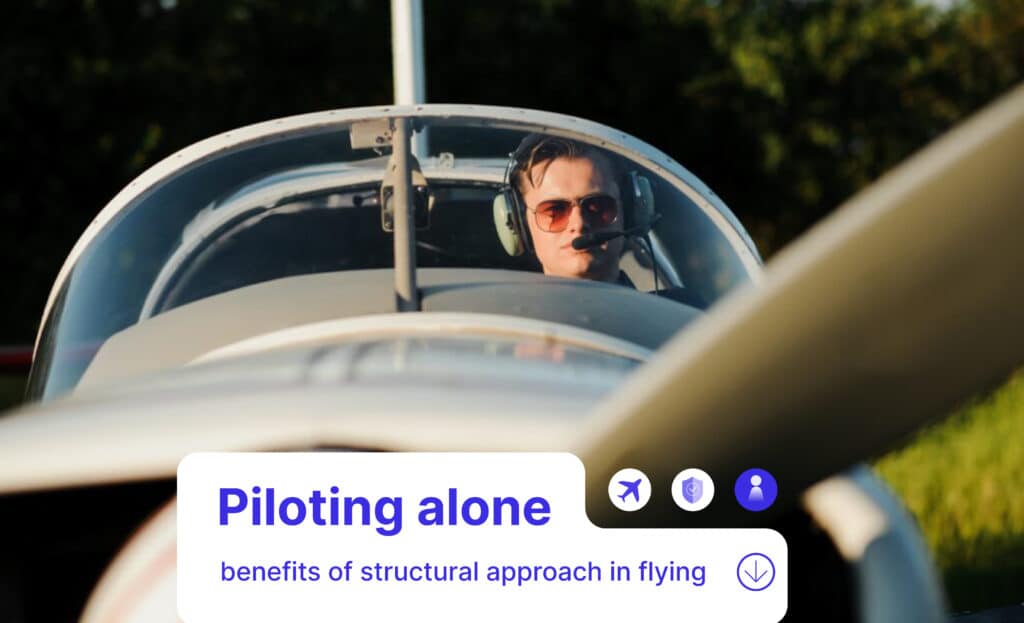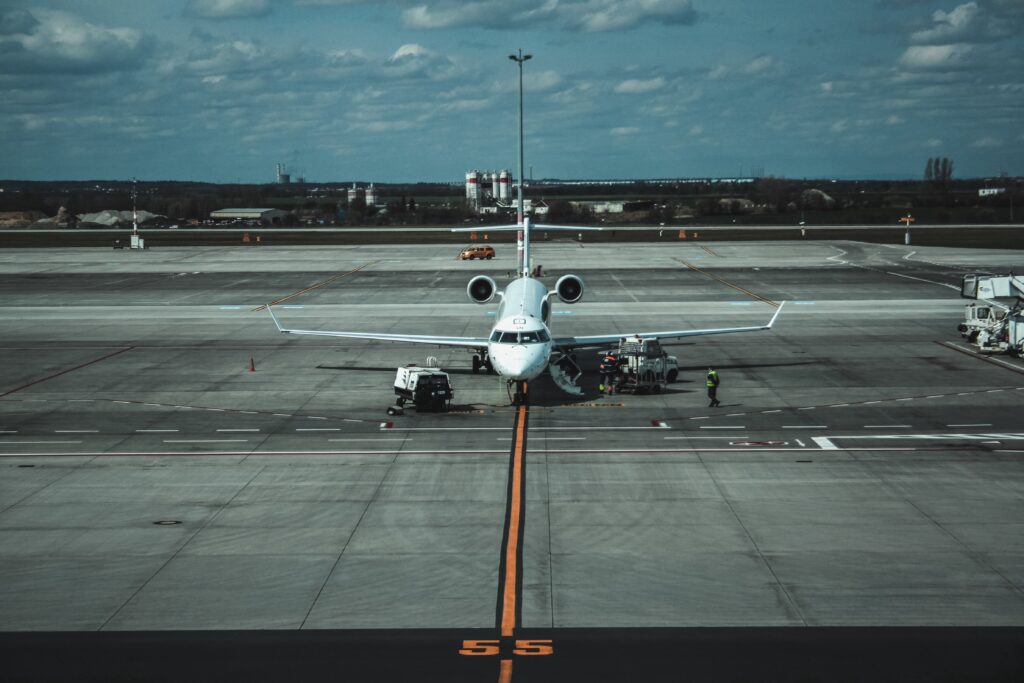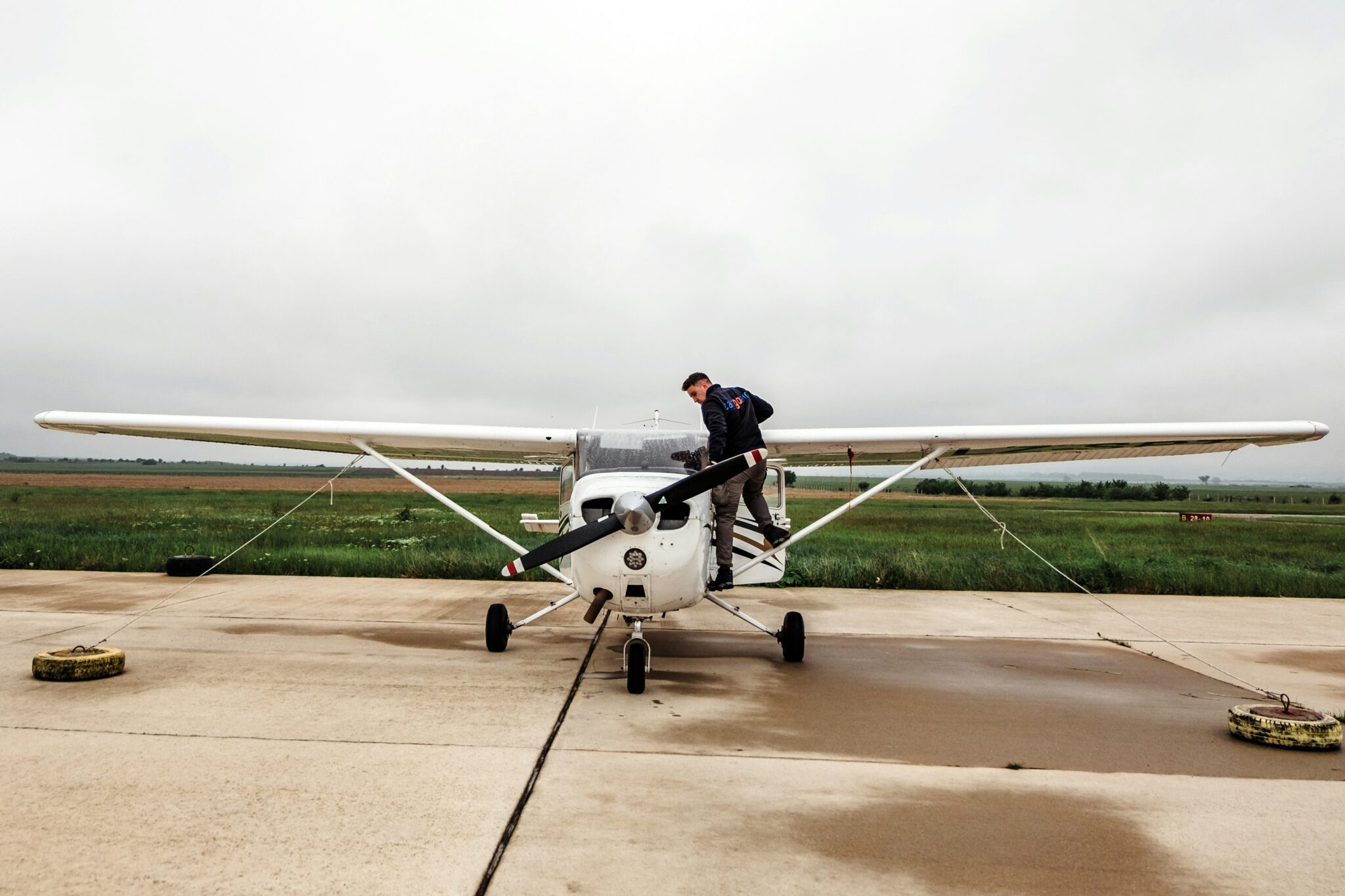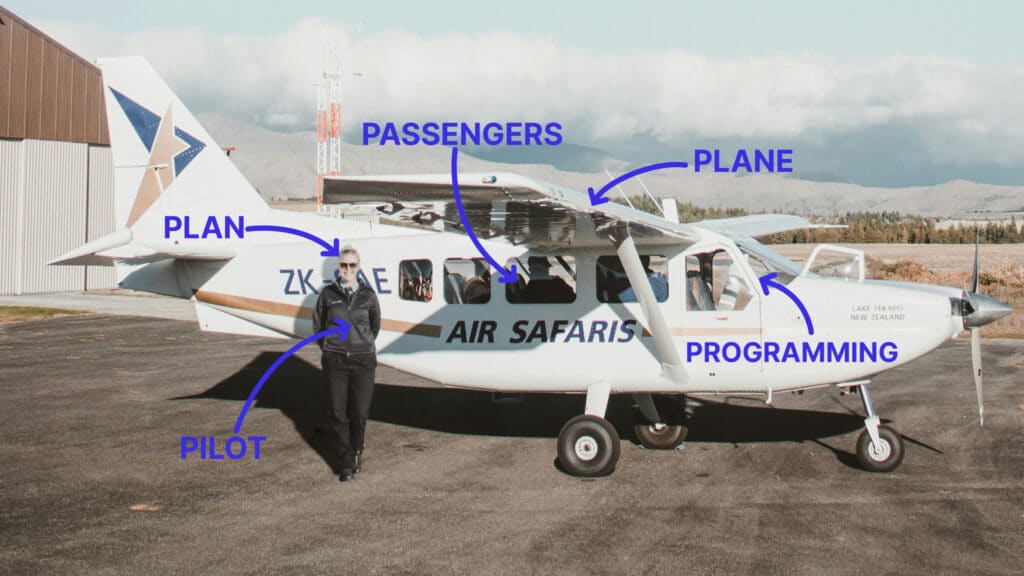
In aviation, where the safety of each flight is paramount, Single-Pilot Resource Management (SRM) emerges as a crucial discipline for those navigating the skies alone.
SRM represents the art and science of efficiently managing all available resources, both onboard and external, to ensure a safe and successful outcome before and during a flight.
Discover all our aviation-related topics.
Single-pilot resource management (SRM) is the art of managing all available resources inside and outside the aircraft for a single pilot before and during a flight to ensure a safe and successful outcome. Incorporating SRM into General Aviation (GA) pilot training is a crucial step towards increasing aviation safety.
SRM is not limited to specific aircraft types or pilot skill levels; it applies to all single-pilot operations in GA. As single pilots face diverse scenarios, SRM addresses various topics, from situational awareness to workload management, automation handling, and aeronautical decision-making.
A key aspect of SRM is acknowledging that there is no one-size-fits-all. Each pilot evaluates situations based on their experience level, personal minimums, and current physical and mental readiness. A systematic approach to this mental process, known as Aeronautical Decision Making (ADM), forms the cornerstone of SRM.
SRM is an adaptation of crew resource management (CRM) training for single-pilot operations. The primary objective of SRM is to teach pilots about their limitations and to reduce accidents caused by human error. The initiative for this training began in 2005 when the NBAA published training guidelines for single-pilot operations of very light jets (VLJs). However, the application of SRM is not limited to VLJ pilots. This training applies to all single-pilot flights in GA.
The content of SRM training is similar to CRM training, except it excludes topics relating to pilot crews (e.g., captain and co-pilot communication). While SRM considers all the resources available to a pilot, it’s essential to understand which resources to use at a given time.
Advanced aircraft technology allows pilots to expand their teams inside the cockpit. There is much more than the radio and an air traffic controller to help pilots maintain their situational awareness and manage risks.

Airline pilots benefit from working as a team with at least two pilots in the cockpit who make decisions together. Air traffic controllers, dispatchers, and various personnel on the ground also support them, dramatically improving the safety of commercial aviation.
However, non-commercial pilots who fly alone may not have access to the same range of resources. This is why Single-Pilot Resource Management, together with Aeronautical Decision Making (ADM), are so important.

ADM is a systematic approach to the mental process used by pilots to consistently determine the best course of action in response to a given set of circumstances. (FAA, Pilot’s Handbook of Aeronautical Knowledge, 2016)
When it comes to aeronautical decision-making, there is no one correct answer. Each pilot is expected to analyze each situation, considering their experience, personal minimums, and physical and mental readiness, and to make their own decision.
The 5P approach to SRM — Plan, Plane, Pilot, Passengers, and Programming — provides a practical framework for day-to-day flying. By regularly evaluating these elements during a flight, pilots can instill a structured approach to their decision-making process.

The plan includes crucial elements of cross-country planning such as weather, route, fuel, current publications, etc. It also includes any events surrounding the flight and allows the pilot to accomplish the mission. The pilot should review and update the plan regularly throughout the flight, considering that any of the factors in the original plan can change at any time.
The plane includes the airframe, systems, and equipment, including avionics. The pilot should be proficient in using all installed equipment and familiar with the aircraft/equipment’s performance characteristics and limitations. As the flight proceeds, the pilot should monitor the aircraft’s systems and instruments to detect abnormal indications.
The pilot must pass the traditional “IMSAFE” checklist. This part of the 5P process helps a pilot identify and mitigate physiological hazards at all stages of the flight. The “I’M SAFE” checklist includes:
Pilots must consider the legal and experiential aspects of being fit for flight, in addition to facing some physical and mental hurdles as aviators. It boils down to three basic questions you should ask yourself before any flight: Am I healthy? Am I legal? And am I proficient?
Passengers can significantly help the pilot by performing tasks like those listed earlier. However, passenger needs such as physiological discomfort, anxiety about the flight, or the desire to reach the destination quickly can create potentially dangerous distractions. If the passenger is a pilot, it is also essential to establish who is doing what. The 5P approach reminds the pilot-in-command to consider and account for these factors.
Programming can refer to both panel-mounted and handheld equipment. Today’s electronic instrument displays, moving map navigators, and autopilots can reduce pilot workload and increase situational awareness. However, programming or operating both installed and handheld equipment (e.g., tablets) can distract severely from other flight duties.
This part of the 5P approach reminds the pilot to mitigate this risk by developing a thorough understanding of the equipment long before takeoff and by planning when and where to accomplish the programming for approaches, route changes, and airport information gathering, as well as when not to attempt it.
Incorporating SRM into GA pilot training marks a significant stride towards enhancing aviation safety. Providing a structured approach to SRM equips pilots with the tools to gather, analyze information, and make informed decisions that integrate into the conduct of a flight.
Given General Aviation’s significant share in aircraft and flight hours and its alarming contribution to fatal accidents, SRM becomes a key intervention. The goal is to reduce accidents caused by human error by enlightening pilots about their limitations and empowering them to maximize their performance.
Single-Pilot Resource Management is not just about managing resources — it’s about providing solo aviators with the knowledge, skills, and frameworks to make sound decisions and ensure safe and successful flights. As technology advances, SRM remains an indispensable tool for pilots navigating the skies alone, fostering a culture of safety and proficiency in single-pilot operations.
Looking for comprehensive CRM training for a single-pilot operator?
NaviMinds offers a wide range of training programs tailored specifically for pilots like you. Contact us today to learn more about our training programs. Call us at +45 26 37 39 39 or email us at ask@naviminds.com.
Dive into our insightful and informative articles that will help you explore more and get ahead of the competition.
© 2024 NaviMinds – Designed by Aveo web&marketing